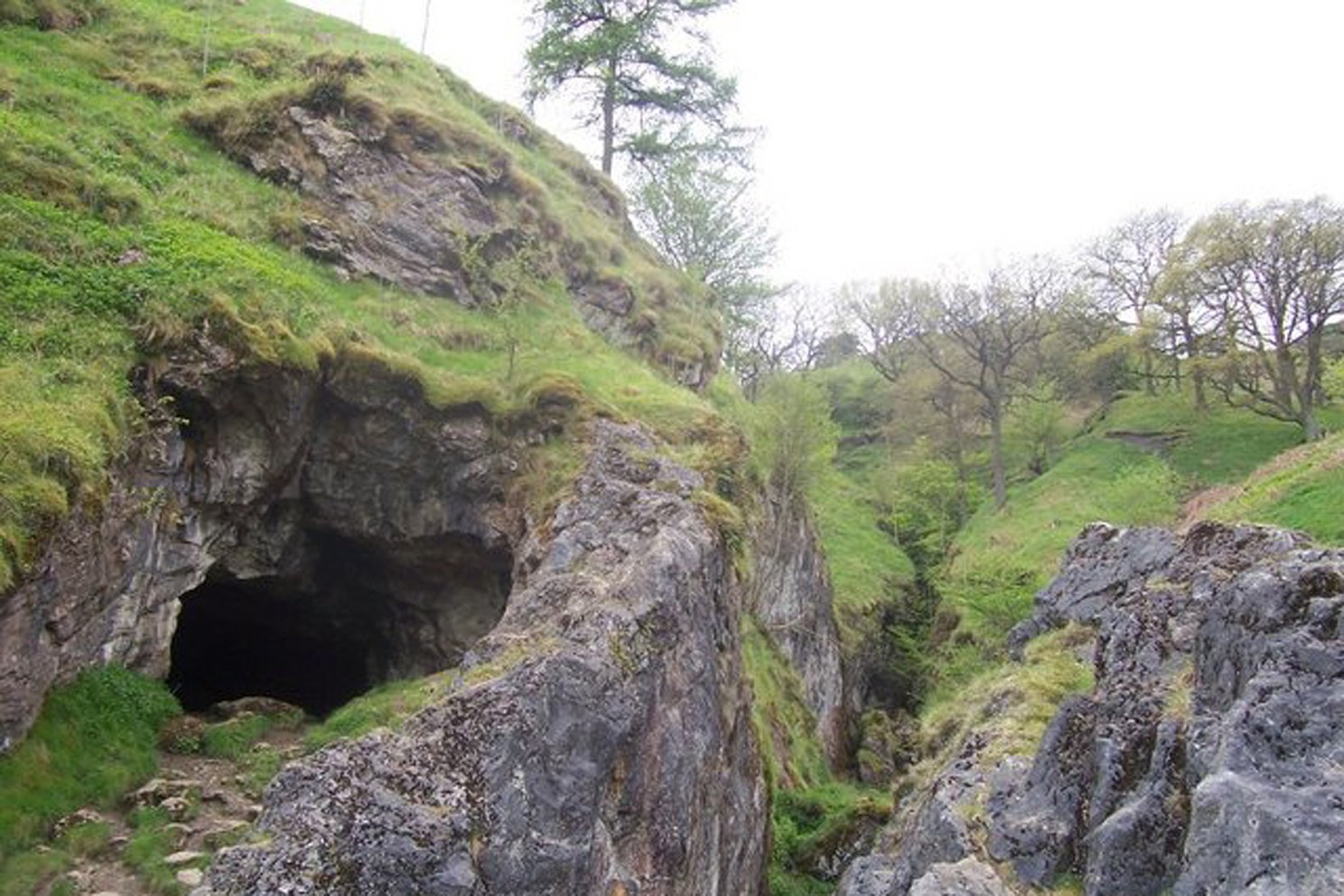High-resolution pollution record reveals centuries of metal production

Odin’s mine, one of the sources of lead and silver from the Peak District of Great Britain. Photo by Martin Speck/Creative Commons
In a new study, scientists and archaeologists from the University of Nottingham, the Climate Change Institute at the University of Maine, and Harvard University, showed that the highest levels of air pollution before the modern era occurred around 800 years ago.
The new data represents the highest-resolution, most detailed and chronologically accurate record in existence for pollution, climate change and economic growth over the past two millennia.
The natural record was retrieved from an alpine glacier (Colle Gnifetti) well known among researchers in Germany, Switzerland (as reported in the New York Times), Italy, and the U.S. for the quality of its ice which, due to ideal conditions at the site, allows scientists to chemically identify changes in pollution and climate year by year, and even season by season, thanks to the use of the Climate Change Institute’s cutting-edge laser technology and expertise. Historians then painstakingly matched the data with documents preserved in the archives and libraries of Europe, bringing history to life with a warning for the present.
“The mid-late 12th century had the same levels of lead pollution as we see in the mid-17th century and even in 1890, so our notions of atmospheric pollution starting in the industrial revolution are wrong,” said Christopher Loveluck of the University of Nottingham.
Comparing data obtained by analyzing glacial ice and historical records, the team showed how political crises and wars left a mark on Europe’s economic growth and environment under some of the most celebrated English kings, Henry II, John Lackland, and Richard the Lionheart.
“By shining a laser on centuries-old ice we’ve learned to read glaciers as we read a book. We’re doing both to shed light on economic history and its health implications,” added Alexander More of the Climate Change Institute, Long Island University, and Science of the Human Past at Harvard.
[gz_photo_layout_hanging_cap image=”301398″ caption=”A%20pipe%20roll%20of%20Henry%20II%2C%20King%20of%20England%2C%20from%201164%20C.E.%20One%20of%20the%20historical%20documents%20used%20in%20the%20study%20to%20track%20lead%20and%20silver%20production%20ca.%20800%20years%20ago.%20″ credit=”Copyright%20%C2%A9%20UK%20National%20Archives%2C%20courtesy%20of%20the%20University%20of%20Nottingham” /]
Even low levels of exposure to lead, a toxic metal, can reduce brain function and result in lifelong health complications. Humans have mined and used lead for centuries in coins, roofs, water pipes, and paint.
Typically, pre-industrial civilization serves as a baseline to compare today’s pollution levels. However, contrary to assumptions of a much cleaner yesterday, humans have released toxic chemicals into the environment for much longer than the last two centuries. The new study shows that before industry, very high levels of lead pollution came from Great Britain, particularly the mines of Carlisle and the Peak District.
In addition to its historic findings, the work of the British-American researchers represents a major innovation in the study of pollution, health and economic history.
Michael McCormick, chair of the Initiative for the Science of the Human Past at Harvard emphasized the consilience of scientific and historical findings.
“Thanks to this new technology, those 12th century particulates embedded in the ice core converge with Britain’s medieval royal archives, the Pipe Rolls, to track yearly lead production, casting sharp new light on the dynamics of the medieval economy,” he said.
“We have improved the sampling resolution in ice cores from the previous standard of 100 samples per meter to 10,000 samples per meter meaning that even in old, compressed ice at depth, high fidelity data is emerging that remained masked or ‘smoothed out’ in lower resolution records. This leap in data accessibility opens up new realms of investigation into the association between climate, pollution and society,” said Paul Mayewski, director of the Climate Change Institute at the University of Maine.
The research is funded by Arcadia, a charitable foundation of Lisbet Rausing and Peter Baldwin.




